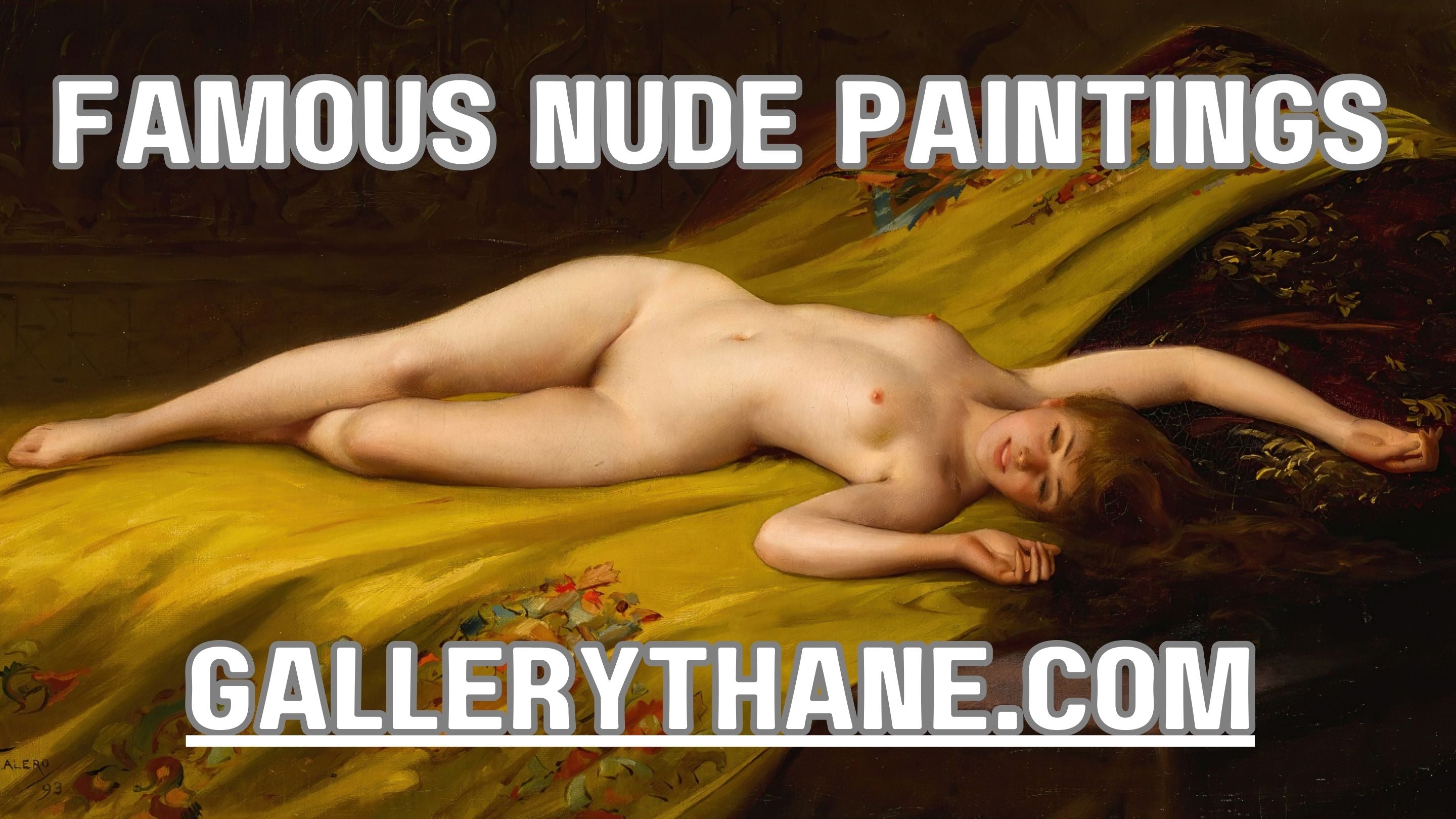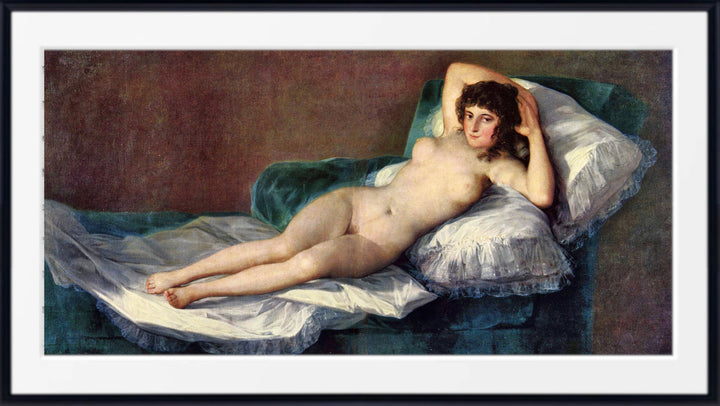Table of Contents:[hide]
Introduction
Nude paintings have been a prominent and controversial subject in the world of art for centuries. These works of art evoke various emotions, provoke discussions, and showcase the artist's skill in portraying the human form. To truly appreciate nude paintings, one must delve into their history, context, and artistic techniques. In this article, we will explore the world of nude paintings by exploring famous examples from different time periods and regions, while providing insights on how to appreciate them as a form of artistic expression.

"Venus of Willendorf" (c. 28,000-25,000 BCE)
Our journey begins with one of the oldest depictions of the human form, the "Venus of Willendorf." This small, limestone figurine is believed to have been crafted during the Paleolithic era. Though not a painting, it serves as a foundational representation of the female body. To appreciate it, one must recognize its historical significance, celebrating the way ancient cultures celebrated fertility and life.
"The Birth of Venus" by Sandro Botticelli (c. 1484-1486)
Moving into the Italian Renaissance, we encounter Sandro Botticelli's iconic masterpiece, "The Birth of Venus." This painting embodies the Renaissance ideals of beauty, symmetry, and grace. To appreciate it fully, one should consider the symbolism of Venus emerging from the sea and the meticulous use of color and form to create a harmonious composition.
"Olympia" by Édouard Manet (1863)
Édouard Manet's "Olympia" caused a scandal when it was first exhibited in Paris in 1865. This painting challenges traditional representations of the female nude by depicting a reclining, unidealized woman who gazes directly at the viewer. To appreciate "Olympia," one must consider its role in the context of art history as a precursor to modern art and a commentary on the objectification of women.
The Sin, Heinrich Lossow
The plot of the picture The Sin is thematically related to the “Banquet of Chestnuts”. This name was given to a scandalous dinner, allegedly held in the Papal Palace by the former Cardinal Cesare Borgia, the son of Pope Alexander VI on October 30, 1501.
"The Nude Maja" by Francisco Goya (c. 1797-1800)
Francisco Goya's "The Nude Maja" is another pivotal work in the history of nude paintings. It portrays a reclining nude woman, exuding sensuality and confidence. To appreciate this painting, it's important to understand Goya's exploration of sexuality and the tension between tradition and freedom of expression in Spanish art during his time.

"The Great Bathers" by Paul Cézanne (c. 1894-1905)
Paul Cézanne's "The Great Bathers" showcases the Post-Impressionist artist's innovative approach to form and structure. This painting combines classical nude figures with Cézanne's distinctive geometric style. To appreciate it, one should focus on the artist's unique interpretation of the human form and the interplay of color and shape.
The Dream (1910), Henri Rousseau
Henri Rousseau's 1910 masterpiece, "The Dream features Yadwigha, his Polish mistress, reclining naked amid lush jungle foliage. Animals, including lions, elephants, and monkeys, populate the dreamlike landscape. The surreal scene is bathed in the glow of a full moon as a snake charmer plays a flute. Rousseau's stylized plants draw from observations at the Paris Museum of Natural History.
To enhance viewer understanding, Rousseau composed a poem, Inscription pour La Rêve, describing Yadwigha's dream. The painting's ambiguity led to varied interpretations, with Rousseau suggesting it depicts a woman in Paris dreaming of a jungle flute player. The reclining nude motif, reminiscent of classical traditions, intertwines with Rousseau's personal experiences, including a romantic involvement with Leonie, a shop assistant. "The Dream" captivates with its enigmatic beauty, showcasing Rousseau's mastery of form and narrative, leaving an indelible mark on art history.

"Les Demoiselles d'Avignon" by Pablo Picasso (1907)
Pablo Picasso's "Les Demoiselles d'Avignon" is a groundbreaking work in the history of art. This painting introduced the world to Cubism and a radical departure from traditional representations of the female nude. To appreciate it, one must engage with the intellectual and artistic revolution it represents, as well as the multiple perspectives and fragmented forms.
Seduction, Luis Ricardo Falero
In 1896, the year of his death, Maud Harvey sued Falero for paternity. The suit alleged that Falero seduced Harvey when she was 17, first serving as his housemaid, and then model. When he discovered she was pregnant, he dismissed her. She won the case and was awarded five shillings per week in support of their child.

"Blue Nude II by Henri Matisse (1952)
Another masterpiece by Matisse, "Blue Nude II," is a testament to the artist's continued exploration of the female form. In this work, Matisse employs bold, simplified shapes and intense blue hues to convey the sensuality and power of the nude. To appreciate it, focus on the emotional impact of color and form in Matisse's composition.
"Nude on a Blue Cushion" by Amedeo Modigliani (1917)
Amedeo Modigliani's "Nude on a Blue Cushion" is a quintessential example of his distinctive style. Completed in 1917, it is currently on display at the National Gallery of Art. The painting depicts a nude woman relaxing on her side on a blue cushion. It is one of a series of nudes he painted from 1916-1919 commissioned by art dealer Leopold Zborowski. When the collection was displayed in Paris, the police reportedly shut it down on its opening day for its obscenity.
Red Angel, Karl Mediz
"Red Angel," a captivating masterpiece by Karl Mediz, embodies an ethereal dance of passion and mystery. The canvas pulsates with vibrant hues, primarily crimson, as an enigmatic androgenous angelic figure takes center stage. The dynamic brushstrokes create a sense of movement, capturing the essence of celestial energy. The juxtaposition of bold reds against darker tones invokes a profound emotional intensity, inviting viewers into a transcendent realm. Mediz's meticulous detailing and evocative use of color elevate "Red Angel" into a visual symphony that resonates with both the mystical and the visceral.
The Bat-Woman, Albert Joseph Penot
Albert Joseph Penot's "The Bat-Woman" bewitches with its haunting allure. This enigmatic masterpiece unveils a mysterious woman draped in shadows, embodying the nocturnal essence of a bat. Rendered in Penot's signature chiaroscuro, the painting plays with light and shadow, accentuating the seductive yet eerie atmosphere. The central figure's penetrating gaze and outstretched wings evoke a sense of both danger and fascination. "The Bat-Woman" invites viewers to unravel the enigma, blurring the lines between darkness and allure in a captivating dance of the supernatural.
Gustav Klimt, Girlfriends
Gustav Klimt's "The Girlfriends" reflects his departure from conventional symbols to explore metaphorical sensuality, triggering public uproar and censorship. The controversial painting, part of a series rejected from public display, faced destruction by Nazi forces in 1945. Klimt's defiance against societal norms marked a turning point, as he depicted the human form without shame, challenging perceptions of art and morality in Austria during his final years.
Conclusion
Nude paintings have played a crucial role in the evolution of art throughout history. They reflect changing societal norms, artistic movements, and individual artists' visions. To appreciate nude paintings fully, it is essential to consider the historical and cultural context, the artist's intentions, and the unique techniques and styles employed. These famous nude paintings provide a rich tapestry of human creativity and expression, inviting us to explore the beauty, complexity, and controversy surrounding the depiction of the human form in art.










